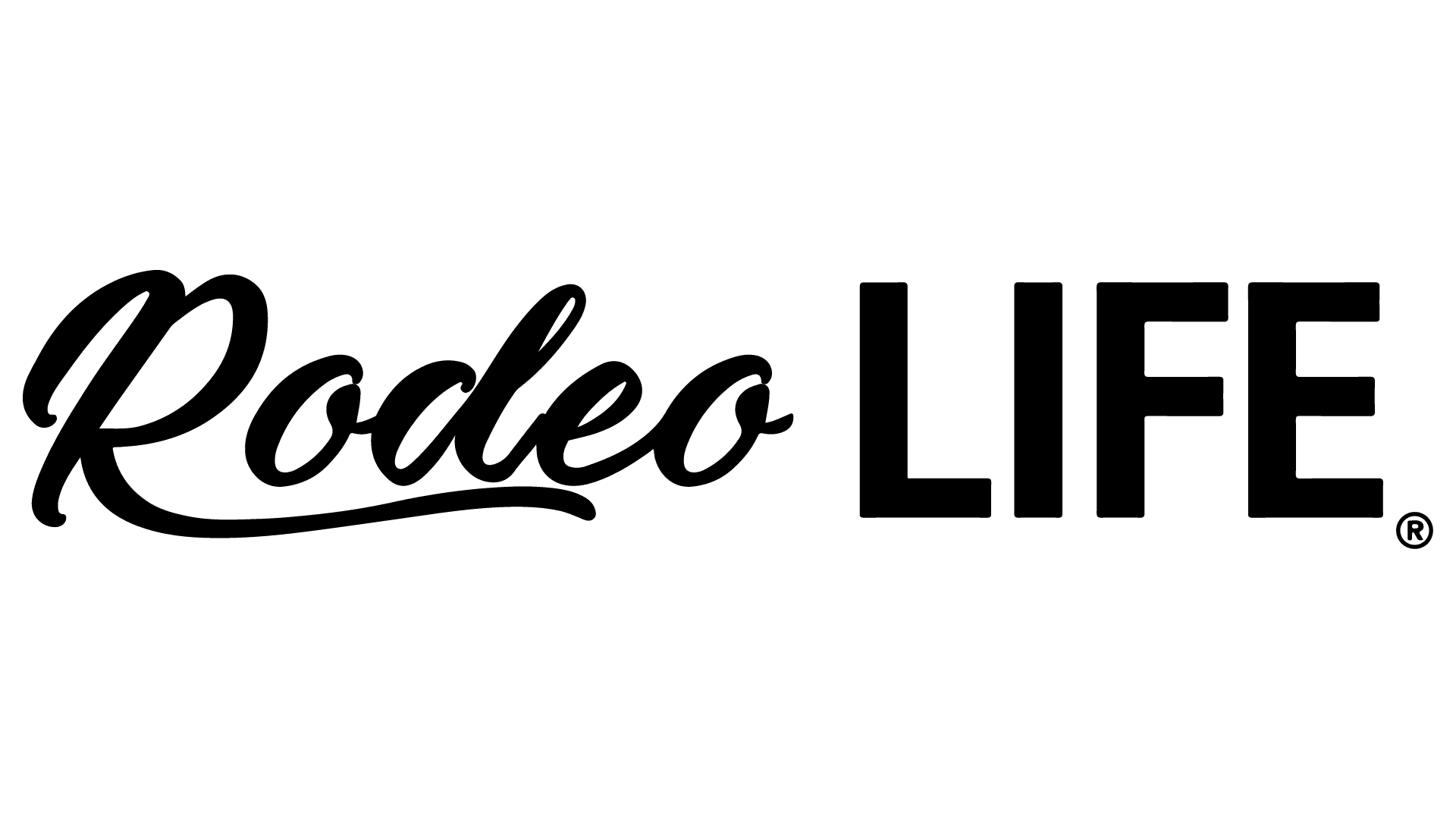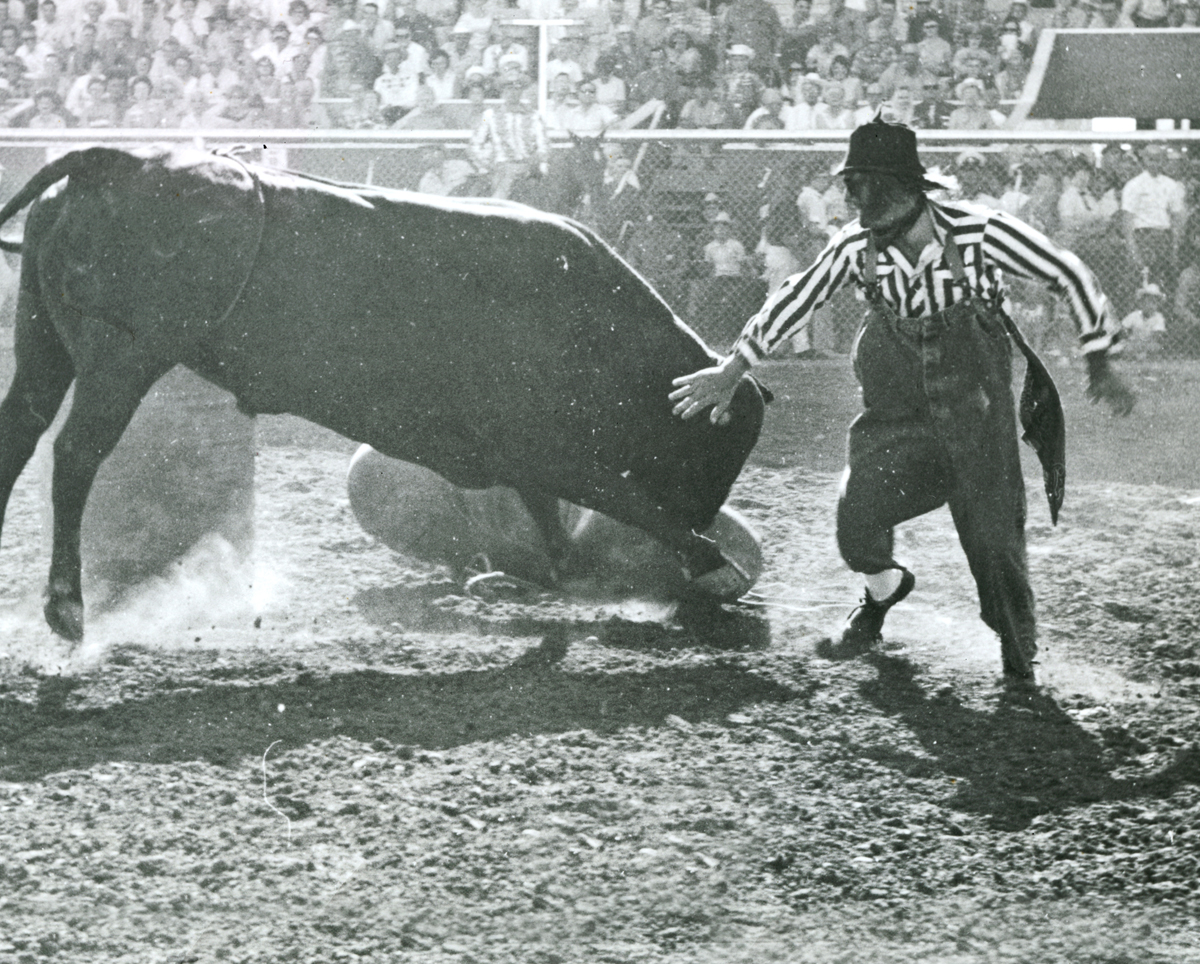Jon Temple loved his time in the rodeo arena. The retired bullfighter and clown spent more than twenty years in regional and pro rodeos across the nation, protecting bull riders and making fans laugh. Born in Cleburne, Texas in 1937, he saw a rodeo clown for the first time when his granddad took him to the Cleburne rodeo. He was about six years old, and he was fascinated. “I watched that fella real close, and I thought, I believe I could do that someday.”
As a youngster, he rode calves and bulls, but that wasn’t where his dreams were. His bullfighting practice was during the weekends, at the buck outs in Fort Worth. There, he learned his way around an arena and around bucking bulls.
Jon worked regional rodeos till his friend and fellow bullfighter Junior Meeks, who held a Rodeo Cowboys Association card (the predecessor to the PRCA), asked him to come to the RCA’s national convention, held in Denver at the Brown Palace. Jon accepted, but didn’t plan on getting his RCA membership. “I went up there with no intent of buying my card,” he said. Meeks and other friends introduced him to stock contractors and producers. Another friend, Jon Routh, introduced him to stock contractor Harry Vold. The three of them went across the street to a café for a cup of coffee. As they visited, Harry began writing on his placemat. He pushed the paper to Jon. It was a list of 33 of Harry’s rodeos, where he needed a rodeo clown. “You can have any of them or all of them,” he said. Jon took a look. “I didn’t want to look shocked so I looked it over,” he said. “And I said, I think I’ll take them all.” It was 1960, and his pro rodeo career was started.
Jon Routh made sure Harry knew Jon was a good choice. As they walked out of the café, Routh called to Vold, “Harry, if he doesn’t make you a good hand, you call me and I’ll work the rodeos.”
Another bullfighter Carl Doering also helped with his career. He worked with Carl, off and on, for three years. Carl helped him fill in his gaps in his schedule, and Jon loved working with him. “He was a swell guy,” he said.
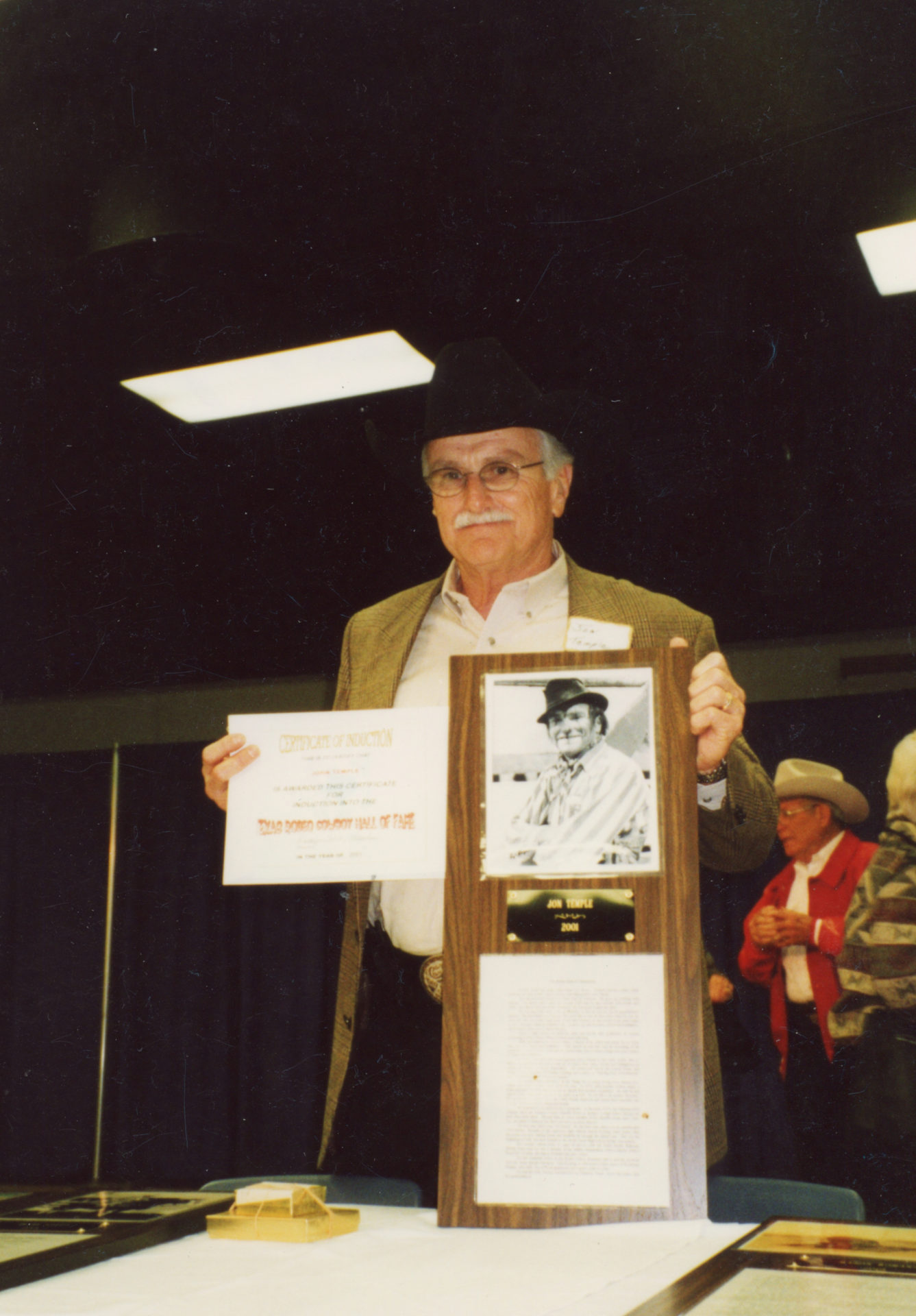
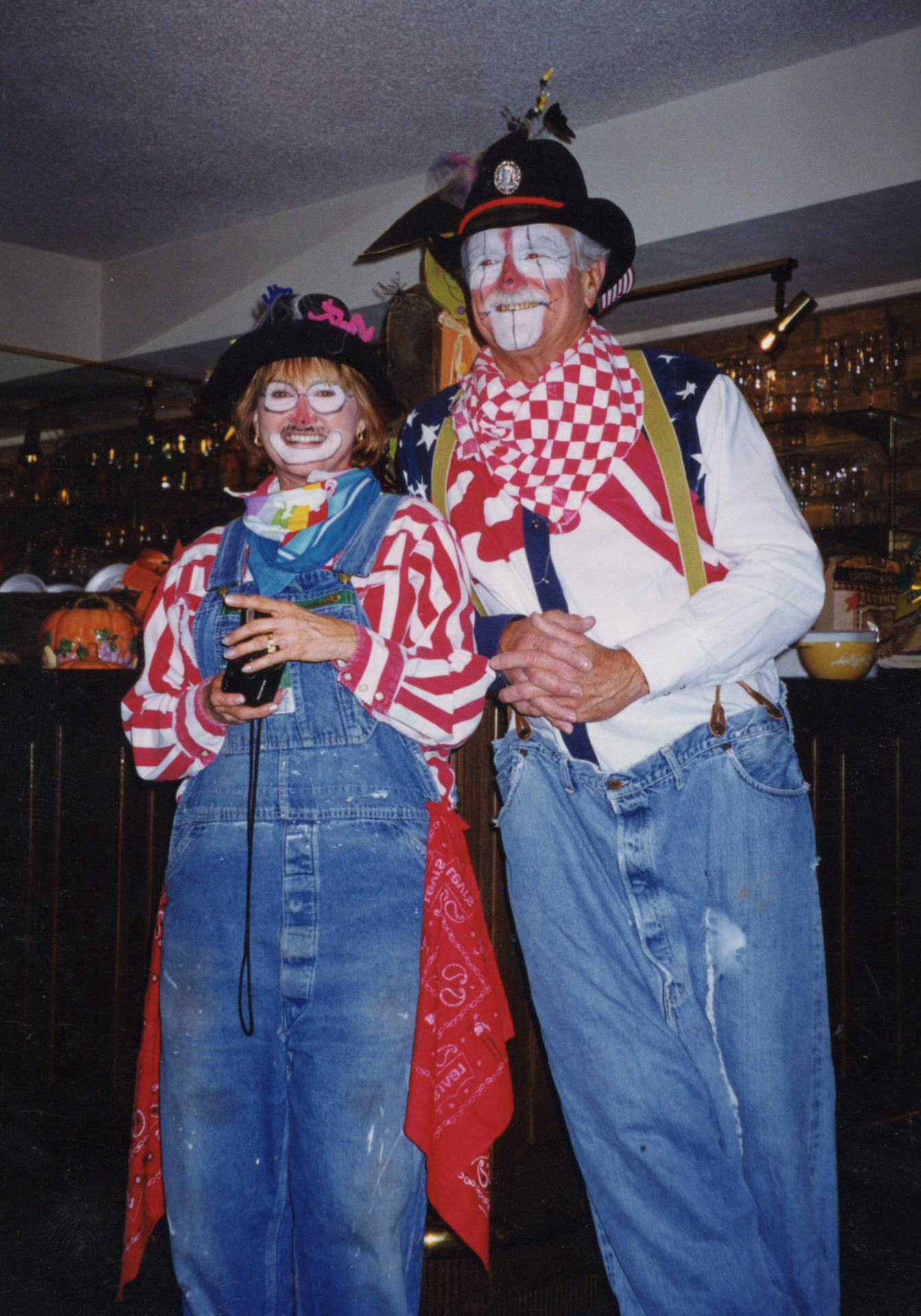
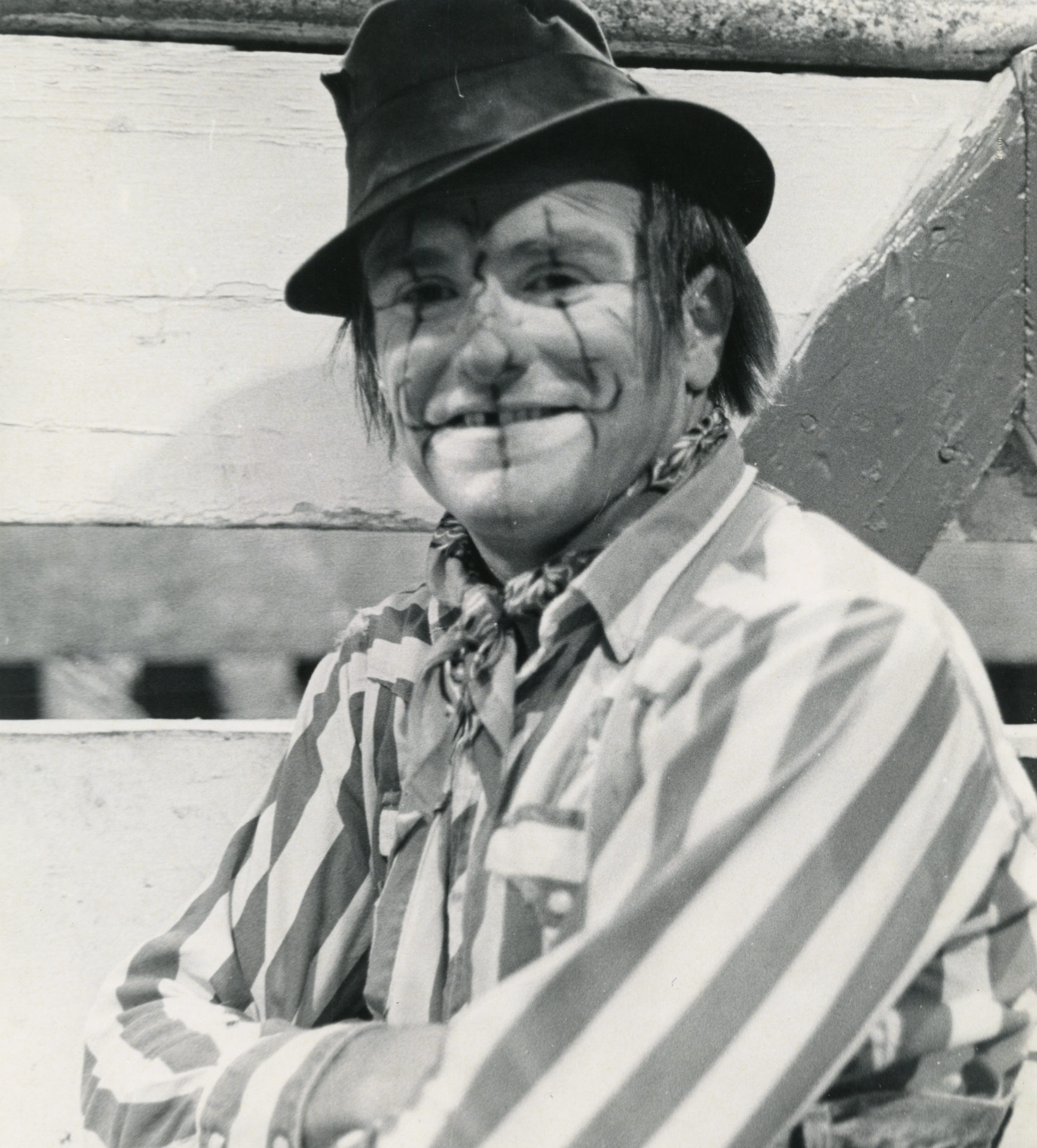
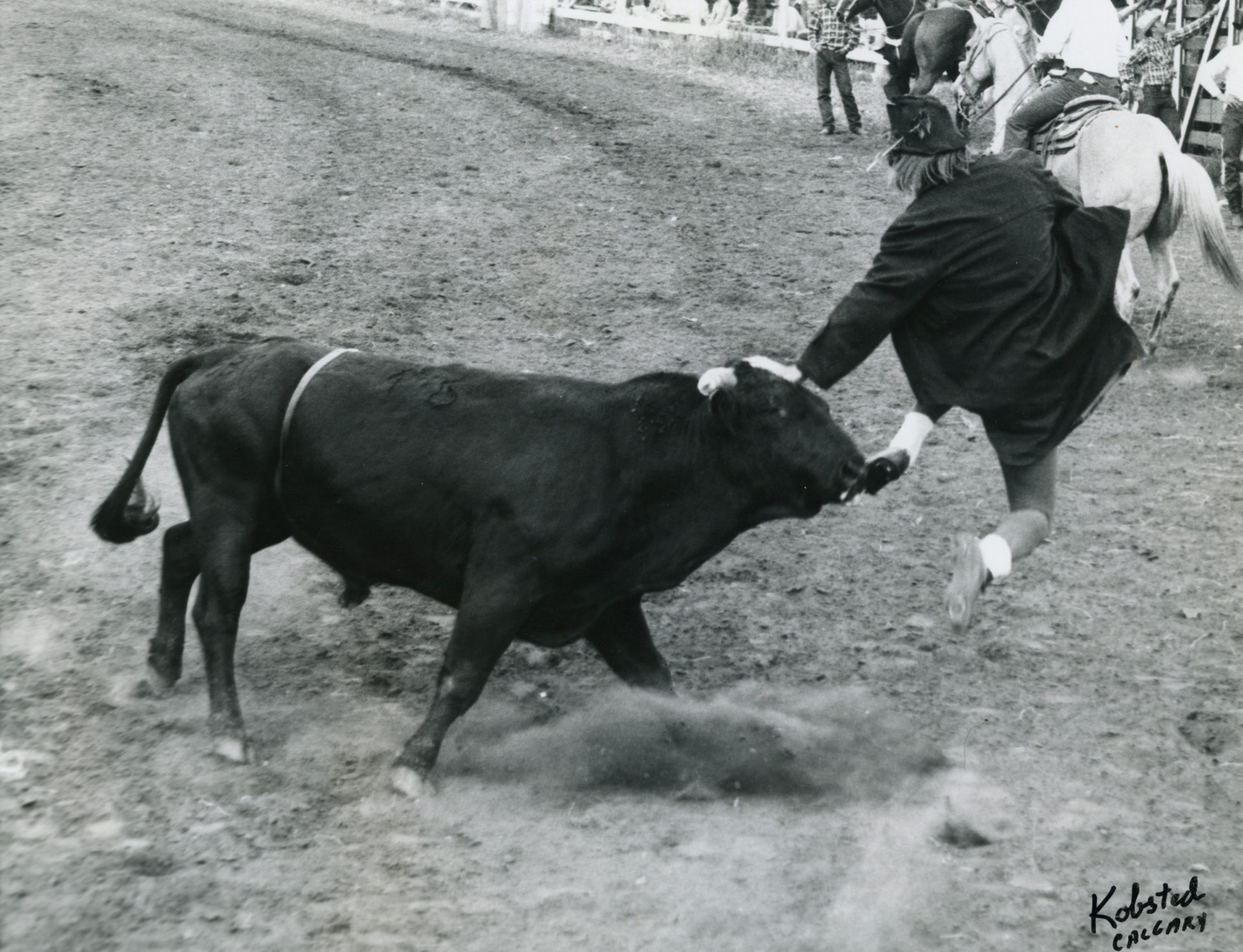
Each fall, Jon went to the RCA convention, prepared to book shows for the next year. Vold had told him he changed clowns each year. For two years, in the fall of ’60 and ‘63, he got a call from Vold, asking him to return to the rodeos. The committees liked the way he worked and wanted him back.
In addition to Vold, Jon worked for a variety of stock contractors, at rodeos across the nation and Canada: Neal Gay, Reg Kesler, Bernis Johnson, Joe Kelsey, Roland Reid, Jim Shoulders, Beutler and Son, Wayne Vold, and more.
One of his acts was a Model A Ford car. With the top cut out, he painted big flowers on it and called it a “hippie van”. The next year, to have a different act for the rodeos he returned to, he had a different paint job put on it and called it a “Tijuana Taxi.”
Jon also had a mule he called Jenny Lou. Trained by a man from a carnival, she could “count.” In the arena, Jon and the announcer would banter about Jenny Lou’s intelligence, then they would come up with a problem, and she’d answer it. Scratched at a spot on the base of her mane, she’d turn her head up and down. Touched on the left shoulder, she’d turn her head back and forth. Jenny Lou was smart, “a whole lot smarter than I was,” Jon quipped. She could sense when they were about to leave for a rodeo. She wouldn’t eat and would drink just a little. During the travels, when they stopped for a water break, she’d get out, take a sip of water, roll, and jump back in the trailer.
She also loved sweets. Tied to the trailer at a rodeo, the kids gathered around her. Jon would tell them to watch their cotton candy and ice cream because she’d try to eat it. As she moved toward the treat to take a bite, the kid would jump back and she’d keep the treat. One time, she took a bite of someone’s cotton candy and got the whole ball, making a mess all over the trailer.
Jon had few serious injuries. He bruised a kidney once at a rodeo in Missouri when a bull rolled on him, which took a long time to heal. In British Columbia, an indoor rodeo was held on a hockey rink with sawdust and dirt over the ice. A bull got in a corner, facing Jon, and Jon slipped in a pocket of shavings. He fell, sliding between the bull’s front legs “like I was sliding into second base,” he joked. The bull “dropped to his knees and went to thrashing me with his horns,” he remembered. “I tried to grab him by the neck, to pull myself out.” A committee man saved him. “A big, heavyset committee guy in a starched white shirt jumped off the gate. The bull saw the flash and jumped to get it. That’s when I made my getaway.” Medics wrapped Jon’s head in gauze and sent him to his hotel. “My old head was throbbing,” he said. With gauze wrapped around nearly everything but his eyes and mouth, “I looked like a freak.” The next day, before the rodeo, he stopped at the doctor’s office for someone to cut the gauze off and put new wrap on it. And his hat and wig didn’t fit; he went without them for that performance.
Another injury happened in Washington. When a bull rider hung up, Jon came in from the off-side, got him loose, and when the bell on the bull rope fell, it hit the back of his hand. He had seen a blur coming at him and put his hand up to his face for protection. It broke two of his fingers; the injury could have been worse if his hand hadn’t been there. And a broken ankle suffered in Mesquite kept him from working the 1969 National Finals Rodeo.
The injury that propelled him to retirement was in 1969. When a bull rider got hung up, Jon moved in, got him loose, but didn’t get far enough back. The bull “gave me a judo chop” on his right ankle. “They put me in the limo (ambulance) and I went to the hospital,” he said. He had broken his leg, which put him out of commission. The doctor told him, “you’re in the wrong occupation. You won’t be walking when you’re fifty.” Jon decided to rodeo one more year, then retire.
After retiring in 1970, he went to work for the Missouri-Kansas-Texas Railroad in Ft. Worth. He worked for them till 1999, when he retired from Union Pacific Railroad.
After that, Jon did carpenter work, refurbished houses, and worked with his wife, Norma, who was a real estate agent. He and Norma owned and operated several car washes. He served for twelve years on a local school board and the couple is active in their church.
Now he and Norma, who married in 1998, sell window treatments, and Jon golfs for a hobby.
He has 3 beautiful redheaded daughters: Marla Roper, who lives in San Antonio, Jeana Temple, in Ft. Worth, and Jonelle Luce, who lives in Joshua, Texas. Norma has a daughter, Shelby Lloyd, who lives in Cleburne. Between the two of them, they have 8 grandchildren and 5 great-grandchildren.
Jon is a 2001 Texas Rodeo Cowboy Hall of Fame inductee, and he loves attending the rodeo clown reunions and catching up with old friends. He appreciates the friends he’s made through rodeo. “The friendships over the years have been God’s blessings,” he said. “They connect me to the right things. That’s how my life has gone. I’ve had some good friends.”
